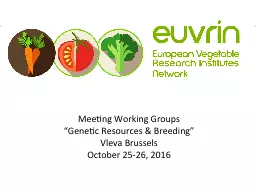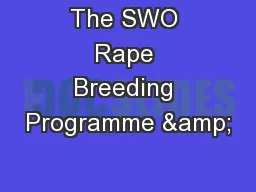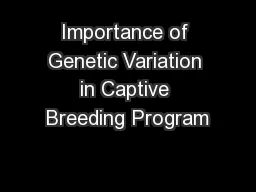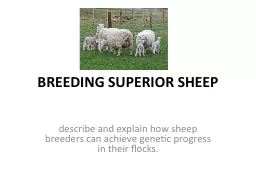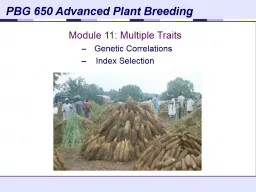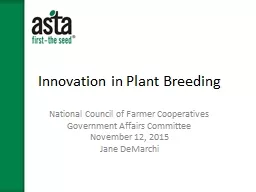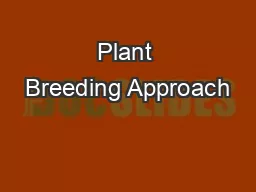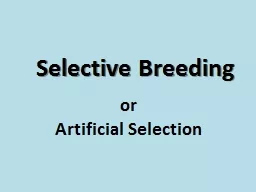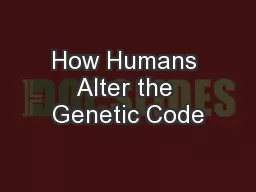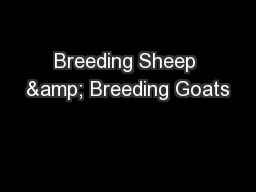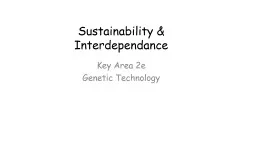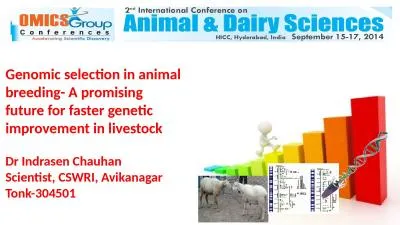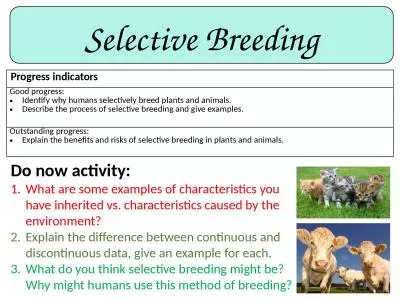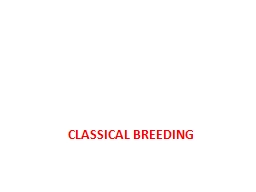PPT-Meeting Working Groups “Genetic Resources & Breeding”
Author : stingraycartier | Published Date : 2020-09-22
Vleva Brussels October 2526 2016 WG Genetic Resources amp Breeding Activities during 2016 Acquisition of information about WG members and definition of WG scope
Presentation Embed Code
Download Presentation
Download Presentation The PPT/PDF document "Meeting Working Groups “Genetic Resour..." is the property of its rightful owner. Permission is granted to download and print the materials on this website for personal, non-commercial use only, and to display it on your personal computer provided you do not modify the materials and that you retain all copyright notices contained in the materials. By downloading content from our website, you accept the terms of this agreement.
Meeting Working Groups “Genetic Resources & Breeding”: Transcript
Download Rules Of Document
"Meeting Working Groups “Genetic Resources & Breeding”"The content belongs to its owner. You may download and print it for personal use, without modification, and keep all copyright notices. By downloading, you agree to these terms.
Related Documents

